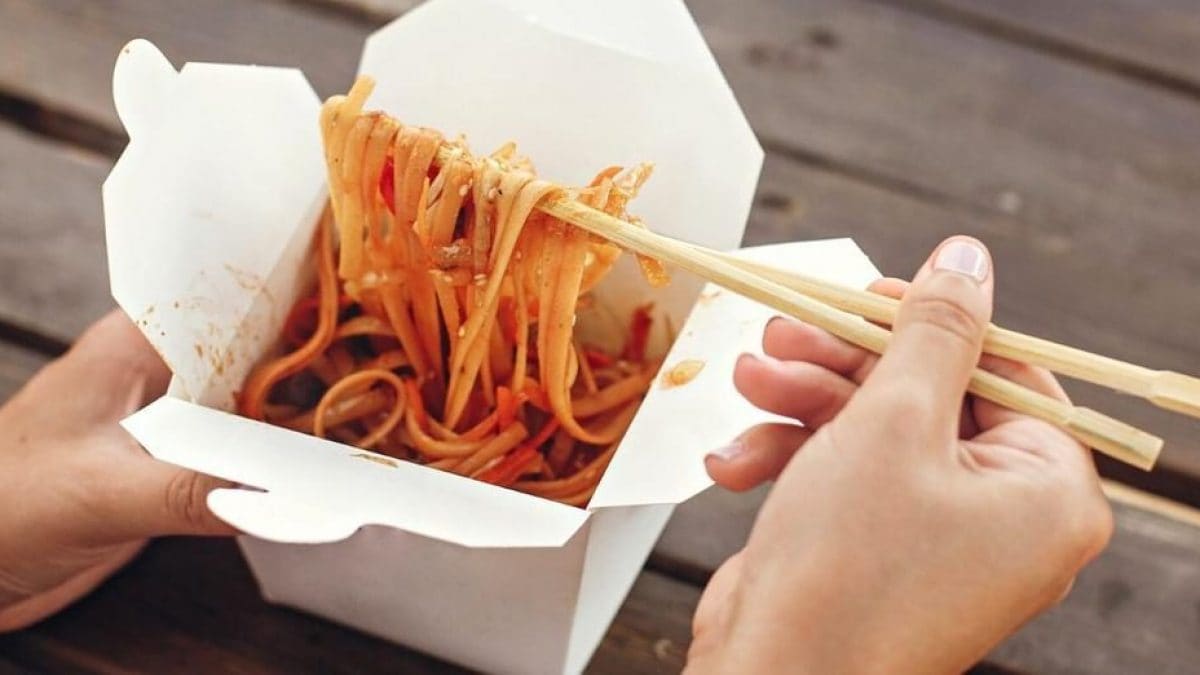
We are used to a knife and fork but there is a whole area of the world that uses chopsticks to eat instead. We often find ourselves in difficulty in ethnic restaurants in front of these two wooden sticks and it has happened to us, at least once in our lives, to ask ourselves why the Chinese eat with chopsticks. In reality this custom is common in many areas of Asia but to find the answer we have to go back in time. Let's discover chopsticks, among legends and ancient stories.
Why Do Chinese Eat With Chopsticks? Blame Noodles and the Crisis
Not everyone knows that in ancient times, even before chopsticks, the Chinese ate with a spoon. In fact, this tool is still very convenient today: it can contain everything, both solid and liquid, it is truly practical. In this specific case, in China in 1000 BC the most common food was millet, perfect for eating with a cutlery capable of holding a large bite. The spoon remained the most used cutlery until 600 BC, the year in which cereals began to be processed, changing their shape. A practical example is "Chinese spaghetti", or noodles: it would be very complicated to eat them with a spoon. This revolution was also contributed to by the increase in consumption of rice which, to make it easier to transport, was compacted into sticks.

The oldest chopsticks that have reached us were found in a tomb of the Shang dynasty, in Zhengzhou, capital of the Chinese province of Henan, and date back to 1200 BC, demonstrating the use of these cutlery even during the "epic" of the spoon. This is because chopsticks are truly very ancient, much older than one might imagine, but historians think that they were intended exclusively for the wealthier classes and that only from 500 AD would the Chinese throughout the country have become aware of them, using them commonly. The period is not random: in fact, the Chinese population boom began in 500. The demographic increase severely weakened the country's resources, forcing chefs, producers and ordinary citizens to develop more moderate habits. Among the ingenious ideas of the Chinese is the idea of cutting food into small pieces to cook them with less heat and less energy. Cutting food a priori makes the use of the knife practically useless, already unofficially abolished previously by all Chinese philosophy developed by Confucius. For the great philosopher, author of the "original thought", the use of knives at the table reminds too much of violence and war, ruining the good mood that characterizes the moment of the meal.
Over time, even the shape of chopsticks has been given a spiritual and philosophical meaning: the upper part is rectangular, and symbolizes the Earth, both as a planet and as the "reality" of what surrounds us, the lower part is round for the sky, a symbol of power, pleasure and imagination. A concept that refers to Yin and Yang, the basis of medicine, science, martial arts and life in China.
Legends Surrounding the Birth of Chopsticks
The most common legends are two. The first obviously dates back to the Shang dynasty, the "owner" of the bronze chopsticks found by archaeologists. In this story the protagonist is a very lucky cook who finds unexpected help from a woman. He is Daji, in the service of King Zhowang, a ruthless and extremely touchy character who finds any excuse to complain to his servants. Many death sentences come for food that is too cold or too hot. One of his concubines decides to put an end to this barbarity by "sacrificing" herself: she suggests to the sovereign to have two ornamental jade pins fed to him, because his hands are too "holy" to touch cutlery. The king greatly appreciates this gesture and establishes the rule of pins at every meal.
The second legend, the oldest and most widespread, takes us to the time of the emperors Yao and Shun (who, unlike Zhowang, actually existed). During the reign of the two sovereigns there was peace and prosperity but China was hit by rains and floods that caused incalculable damage and many deaths. Enter Da Yu, a strong and courageous man who Yao asked to stem the waters with engineering techniques. During a sea voyage Da Yu lands on an island to spend the night and begins to cook but, overcome by hunger, tries to pick at the boiling meat with his hands, but is unable to do so due to the excessive heat. He then breaks off two twigs from a tree and uses them to eat the meat from the boiling broth without waiting to finish the soup. This habit of using chopsticks becomes a habit that allows him to save time and focus even more on the problem posed by the emperor: once he returns to China, victorious, Da Yu becomes a hero and everyone imitates him and pays homage to him by using wooden chopsticks.
;Resize,width=767;)
